Dr Grace Stewart Billings
Dr Billings was the first woman to set up a medical practice in Cheltenham - at 3 Pittville Parade (now 6 Evesham Road) in 1899.
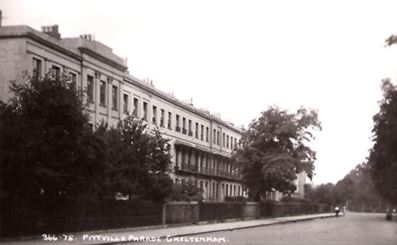
Grace Stewart was born in 1872 in Portishead, Somerset. Her father, James Stewart, was a chemist. As a young girl Grace and her brothers and sisters lived with her parents at her father’s chemist’s shop at 2, Royal Promenade, Bristol.
Grace attended Clifton High School for Girls in Bristol, which had opened in 1878 as part of a new wave of independent day schools for girls. From its earliest days the school was ahead of its time, being egalitarian, non-denominational and non-competitive as well as extremely successful academically. It was subsequently one of the first schools to offer chemistry for girls, giving them the opportunity to follow careers in medicine.
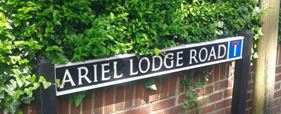 By 1887 the Stewarts had moved to Cheltenham, where they lived at Ariel Lodge, Hewlett Road. Ariel was the middle name of Grace’s mother Louisa and also of her sister Mary. The house no longer exists, but its name remains as the street name for a development of modern houses.
By 1887 the Stewarts had moved to Cheltenham, where they lived at Ariel Lodge, Hewlett Road. Ariel was the middle name of Grace’s mother Louisa and also of her sister Mary. The house no longer exists, but its name remains as the street name for a development of modern houses.
Grace’s father ran the Co-operative Drug Stores in the High Street. The family eventually numbered ten – five sons and five daughters.
In Cheltenham Grace attended another new, progressive school - the Public Day School for Girls at 3 Bays Hill Villas. The school opened in 1885 to provide “at a moderate cost, the best education procurable for the daughters of the Middle Classes” whose parents’ social status would “preclude their admission into the Ladies’ College.” It was run by Miss Mary Louisa Bostock, a former pupil and teacher at the Ladies’ College, and was often known simply as “Miss Bostock’s”.
Grace undertook her medical training at the London School of Medicine for Women. She sat exams for the 5-year “Triple Qualification” at the Royal College of Physicians in Edinburgh.She attended the College of Medicine of the University of Durham, located at Newcastle-on-Tyne, where she graduated with an MB and BSurg in 1898. Her sister Mary was also a medical student at around the same time, and received her medical degree from London.
At the end of the nineteenth century there was considerable hostility to women studying medicine. The Saturday Review wrote in 1870 that “lady aspirants to medicine and surgery desire to rid themselves speedily and effectually of that modesty which nature planted in them”.
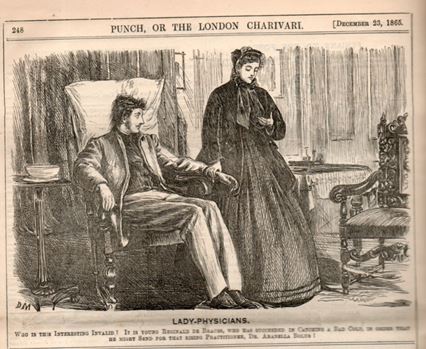
In 1899 Grace married Frederick Billings, a local builder who lived in Albert Place. Frederick’s wedding present to his new bride was a bicycle; her father bought her a set of medical instruments.
“Great local interest was taken in the marriage, at Charlton Kings, on Saturday, of Mr. Frederick Billings, a builder, and Miss Grace Harwood Stewart, who possesses the double degree of Bachelor of Medicine and Bachelor of Surgery. One of her sisters, who were her bridesmaids, is also a lady doctor, and many other lady members of the medical profession were among the guests.”
(Gloucester Citizen, 31 July 1899)
In the year of her marriage Grace set up her practice at 3 Pittville Parade, accepting women patients only. Until the outbreak of the First World War, the majority of women doctors treated only women and children.
“When she first came to the town there were already forty doctors there; she was the forty-first, and the first woman. She has related how she called on them all, as was the excellent custom of those days, and how she was received quite kindly, but, in some cases, obviously not seriously.” (Obituary in BMJ 13 July, 1957, p. 108)

In 1900 the couple had their first child, (Frederick) Stewart. Despite the prejudices against women doctors, general practice was one of the few professional careers that a married woman could combine with domestic responsibilities. Most of the early women GPs in effect worked from home; Grace Billings was no exception.
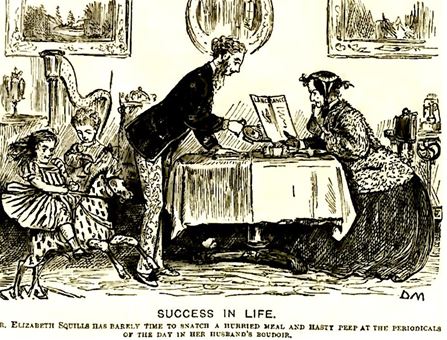
In 1903 Grace, Frederick and their young son moved to Sussex Lodge, near Pittville Gates. Their daughter Brenda was born in 1911.
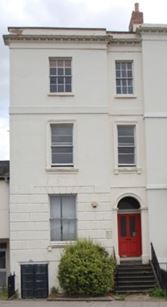
Shortly afterwards the practice moved again, to Gloucester Lodge at 129 The Promenade. Grace gradually made a name for herself in the medical establishment. She gave lectures, ran training sessions, and took on public duties. She regularly attended the meetings of the Gloucester branch of the British Medical Association.
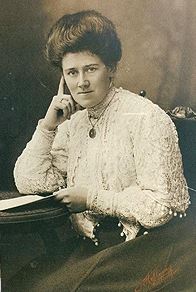
Photo: courtesy of the King and Billings families
“For some time she was the only woman present at B.M.A. meetings. It needed some courage to go to the dinners after the meetings, when women were in the extreme minority, but this never seemed to worry Dr. Grace. It was amusing to watch her light her after-dinner cigar in complete unconcern at the surprised glances of newly arrived doctors to the area.” (Obituary in BMJ 13 July, 1957, p. 108)
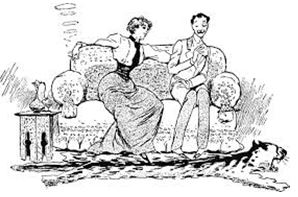
When the First World War broke out she was in her early forties. Her son Stewart joined the Royal Navy in 1914 at the age of 14.
During the First World War eight Voluntary Aid Detachment (VAD) hospitals were set up in Cheltenham to receive sick and wounded soldiers brought back from the battlefields. Women played a major role in the running of these hospitals - not only as nurses but as Commandants, Superintendents, Quartermasters, Treasurers and Secretaries. The medical officers were almost exclusively men, but Dr Billings became medical officer at St Martin’s Hospital which was based in a Cheltenham Ladies’ College boarding house.
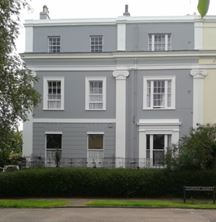 A few months before the end of the war, St Martin’s Hospital moved to Lisle House in Clarence Square, Pittville. It was subsequently used as a hospital for paralysed soldiers. Lisle House still exists (next door to the Clarence Court Hotel) but is now converted to residential flats. The row of houses beside it is called St. Martin's Terrace in reference to the hospital.
A few months before the end of the war, St Martin’s Hospital moved to Lisle House in Clarence Square, Pittville. It was subsequently used as a hospital for paralysed soldiers. Lisle House still exists (next door to the Clarence Court Hotel) but is now converted to residential flats. The row of houses beside it is called St. Martin's Terrace in reference to the hospital.
Dr Billings retained her practice in the Promenade and was joined there by a partner, Dr Gwendolen Brown, in 1927. She retired in 1936 and was widowed in 1937, but came out of retirement to work with St John Ambulance during WW2. Her daughter Brenda became a GP in Cheltenham and then School Medical Officer for Gloucestershire County Council. Her son Stewart had a distinguished naval career, becoming a Rear Admiral. He was awarded the CBE in 1953.
In 1949 Dr Billings moved to a house in Evesham Road, overlooking Pittville Park and a few hundred yards from where she had opened her first practice fifty years earlier. She died in 1957.
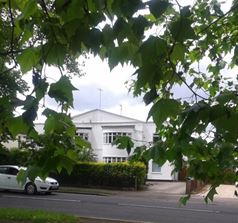
On 25 March 2015 a blue plaque was unveiled by Cllr Simon Wheeler, Mayor of Cheltenham, at 6 Evesham Road, to commemorate the establishment of Dr Billings's surgery there in 1899. A number of Dr Billings's descendants attended the ceremony.
 Copy of Unveiling.jpg)
Hilary Simpson

 By 1887 the Stewarts had moved to Cheltenham, where they lived at Ariel Lodge, Hewlett Road. Ariel was the middle name of Grace’s mother Louisa and also of her sister Mary. The house no longer exists, but its name remains as the street name for a development of modern houses.
By 1887 the Stewarts had moved to Cheltenham, where they lived at Ariel Lodge, Hewlett Road. Ariel was the middle name of Grace’s mother Louisa and also of her sister Mary. The house no longer exists, but its name remains as the street name for a development of modern houses. 





 A few months before the end of the war, St Martin’s Hospital moved to Lisle House in Clarence Square, Pittville. It was subsequently used as a hospital for paralysed soldiers. Lisle House still exists (next door to the Clarence Court Hotel) but is now converted to residential flats. The row of houses beside it is called St. Martin's Terrace in reference to the hospital.
A few months before the end of the war, St Martin’s Hospital moved to Lisle House in Clarence Square, Pittville. It was subsequently used as a hospital for paralysed soldiers. Lisle House still exists (next door to the Clarence Court Hotel) but is now converted to residential flats. The row of houses beside it is called St. Martin's Terrace in reference to the hospital. 
 Copy of Unveiling.jpg)